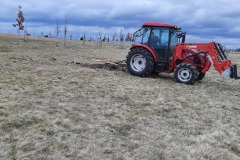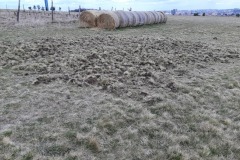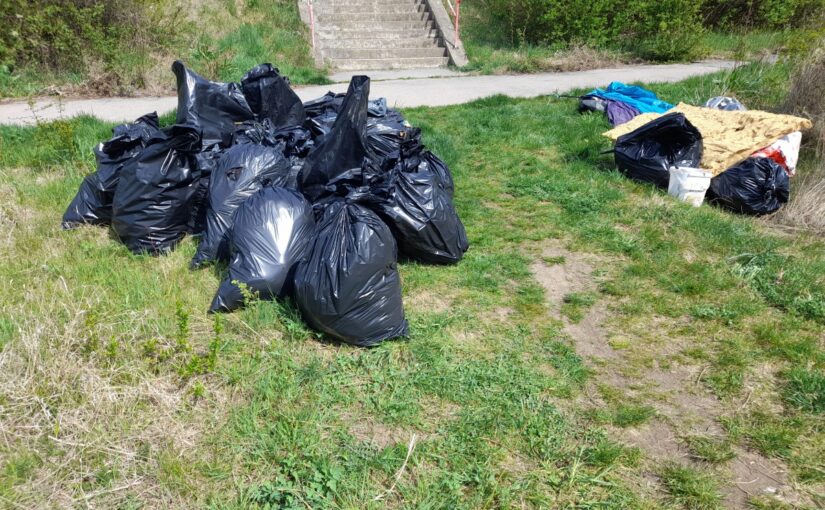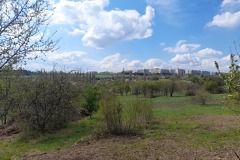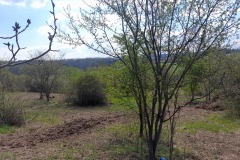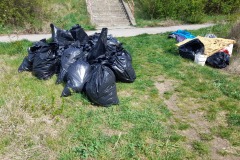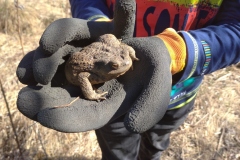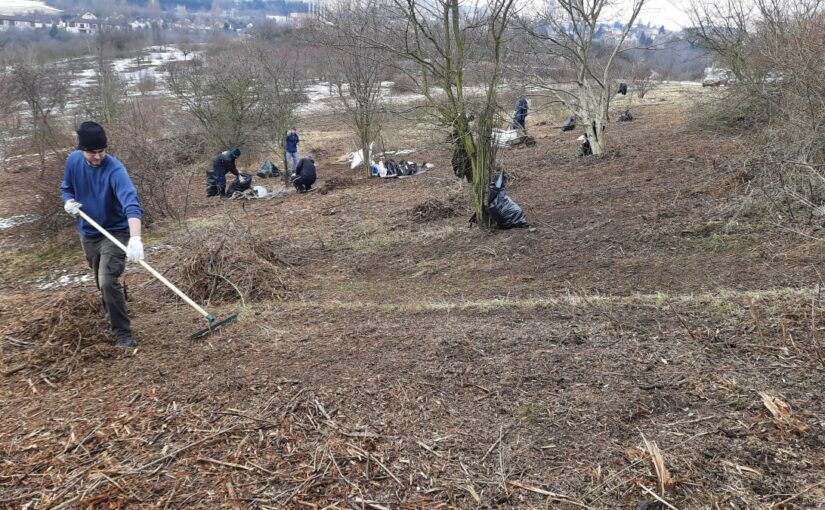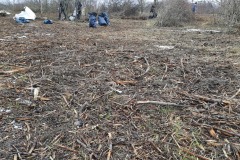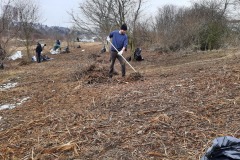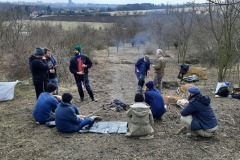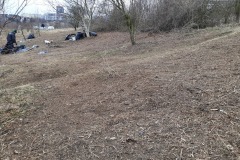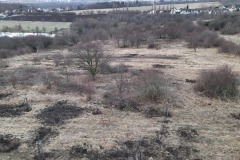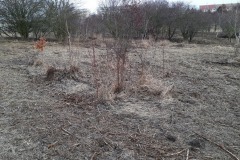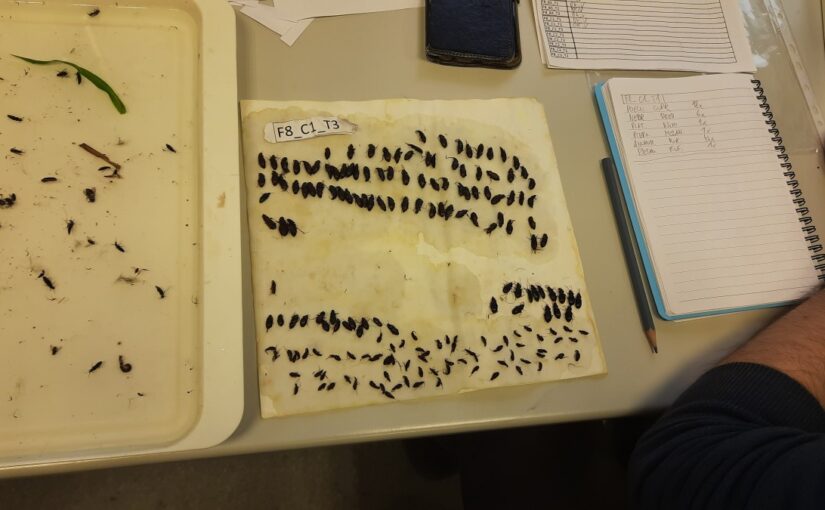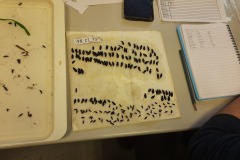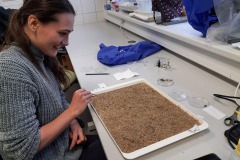During April, we set up nectar-breeding plots at Dívčí Hrady and around Asuan. Among other plants, species serving as food plants for caterpillars of some target butterfly species (eg crepuscular burnet or silver-studded blue) will also be sown. Furthermore, turf was disturbed in places potentially suitable for the reproduction of rock grayling, whose eggs and caterpillars require warmed and loose fescue lawns. We wold not be able to handle with the heavily connected turf without the help of heavy equipment.
Author: -
Finally clean above Asuan!
School children and volunteers have helped with wood chips
The amount of wood chips and rubbish above the Asuan reservoir was so large that it was not possible for the members of the project team to clean the entire area. Fortunately, pupils from the FZŠ Prof. Otokara Chlupa, also took part in the work within the Patronages project under the auspices of the Scout Institute. With the rakes, they set out to help not only the butterflies, but they also managed to save the overheated toad. Over the weekend, their efforts were followed by other volunteers who, in addition to the feeling of a job well done, could sit by the fire and refresh themselves. Although there is still some work to be done, there is less wood chips and rubbish.
Spring is calling – the raking call No. II
Do you want to help nature and missed our last event? Or have you been there and want to experience it again? Participate in the wood chips raking and garbage cleaning around the Asuan pond in the Prokop Valley in Prague: 50.0455628N, 14.3467067E
The event will take place on Saturday 26th March from 9:00, if the weather is nice. If you are interested, write to us at: insectecologygroup@gmail.com. We will offer REFRESHMENTS in the form of sausages and drinks (beer, lemonade). Beautiful weather guaranteed!
Cleaning the wood chips after shrub pruning around Asuan reservoir
On Saturday, March 5, we cleaned the garbage and removed the wood chips that remained after cutting and crushing the overgrowth trees and shrubs around the Asuan pond. A total of 12 people participated in the event, both team members as well as enthusiastic volunteers. THANK YOU VERY MUCH (VOLUNTEERS) and we hope to see you again! There is still plenty of chips to remove. In the next step, sowing of nectar-rich plants and other interventions to support endangered butterfly species will begin.
Help us clear wood chips after shrub pruning around Asuan reservoir
Do you want to do some good for nature? Participate in the removal of garbage and wood chips around the Asuan pond in the Prokop Valley in Prague.
The event will take place (if the weather is good) on Saturday 5 March from 9:00 CET.
If you are interested, send us a message via our Facebook page or to: insectecologygroup@gmail.com. REFRESHMENT in the form of sausages and drinks (beer, limonade) will be provided.
The results of monitoring of Hipparchia semele at Dívčí Hrady confirm the need for further management interventions
In the summer of 2021, we focused on the distribution and population size of one of our target species – the critically endangered rock grayling Hipparchia semele. During the survey from June to October 2021, focused mainly on the newly established grassland areas at Dívčí hrady, we recorded 44 males and 28 females. Rock grayling occurred mainly in the vicinity of solitary trees or around the enclosure with the Převalský horses. In particular, males used trees for so-called perching: they sat on an elevated spot and set out for flying butterflies and other insects in order to find suitable females for mating. Unfortunately, we were not able to record egg-laying as we observed at the same site in the previous season. The reason is probably that turf in the lawn is more developed. The planned disruption of turf on small areas could again increase the attractiveness of the Dívčí hrady sites for the development of Hipparchia semele.
Monitoring of butterflies – results
During the 2021 season, four monitoring visits were carried out. The aim was to evaluate the habitat quality of focal sites using butterflies as bioindicators. In total, we recorded 1691 specimens of 44 butterfly species. We recorded all target species, but only the Chapman’s blue and rock grayling were recorded in large numbers. Let’s hope that in the coming years their numbers will increase thanks to our management interventions!



